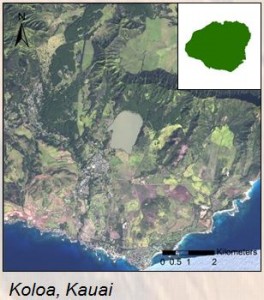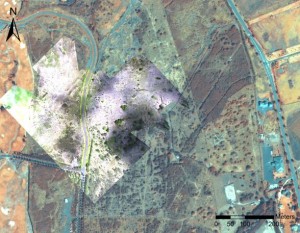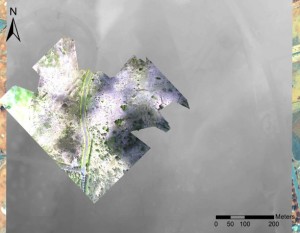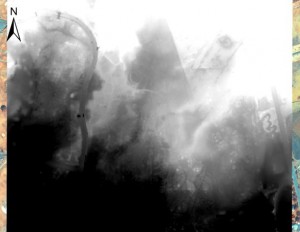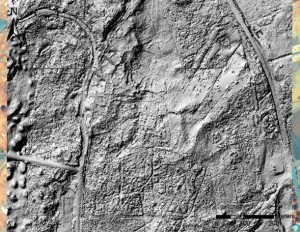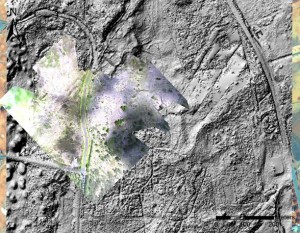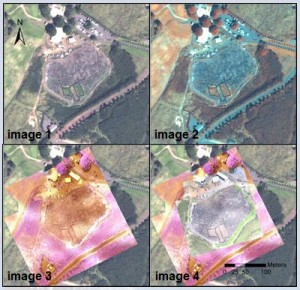John O’Connor – Remote Sensing and Ancient Polynesian Landscapes
Remote Sensing and Ancient Polynesian Landscapes
John Thornton O’Connor University of Hawaii-ManoaThesis
Remote sensing data collection enables the visual identification of cultural features and the generation of spatial structure information about aggregate artifacts.Hawaiian archaeological features are constructed from individual basalt rocks. Artifact structures are aggregates of discrete objects organized into spatially coherent sets. What remote sensing methods are most effective for the identification of aggregate archaeological features across prehistoric Hawaiian landscapes?
Solution and Data Requirements
The goal is to identify features at the scale of the object set. Solutions must be automated, low cost, and capable of large area coverage with good spatial precision. Data acquisition sensor must capture imagery of large structures, reveal obscured features, and produce images of sufficient precision for structural attribute analysis.
Remote Sensing Platforms
- Ground-secured: Pole Aerial Photography (PAP), Kite Aerial Photography (KAP)
- Unmanned Aerial Systems (UAS): suborbital remote-controlled fixed-wing aircraft, Gatewing X100 low altitude surveillance craft, NASA Pathfinder atmospheric satellite
- Light Detection and Ranging (LIDAR) aircraft-supported imaging
- Orbital satellite imaging: Quickbird (4-band) and WorldView-2 (8-band) earth observation satellites
Methods
Light Detection and Ranging (LIDAR)
Multispectral Imaging
Conclusions
Acknowledgements
Special thanks: Dr. Carl Lipo, Dr. Suzanne Wechsler, and Dr. Christopher Lee of California State University-Long Beach; Dr. Terry Hunt of the University of Hawaii-Manoa; Dr. David Burney and Lida Pigott Burney of the National Tropical Botanical Garden; Paul Nesbit, Briton Voorhees, Mike Ferris, Jacob Kovalchik, Matt Lucas, Ted Ralston, Chuck Devaney, Dave Hummer, Hal Hammatt, Teddy Blake, Lawrence Fujiwara, Samantha Hauser, and Avery Sandborn.
Research funding has been provided by the National Science Foundation, REU-Geospatial Research and Mapping (GRAM) Grant No. 1005258.
Mahalo nui au i kuu ohana no ko lakou kokua mau loa. Aloha au ia oukou.

